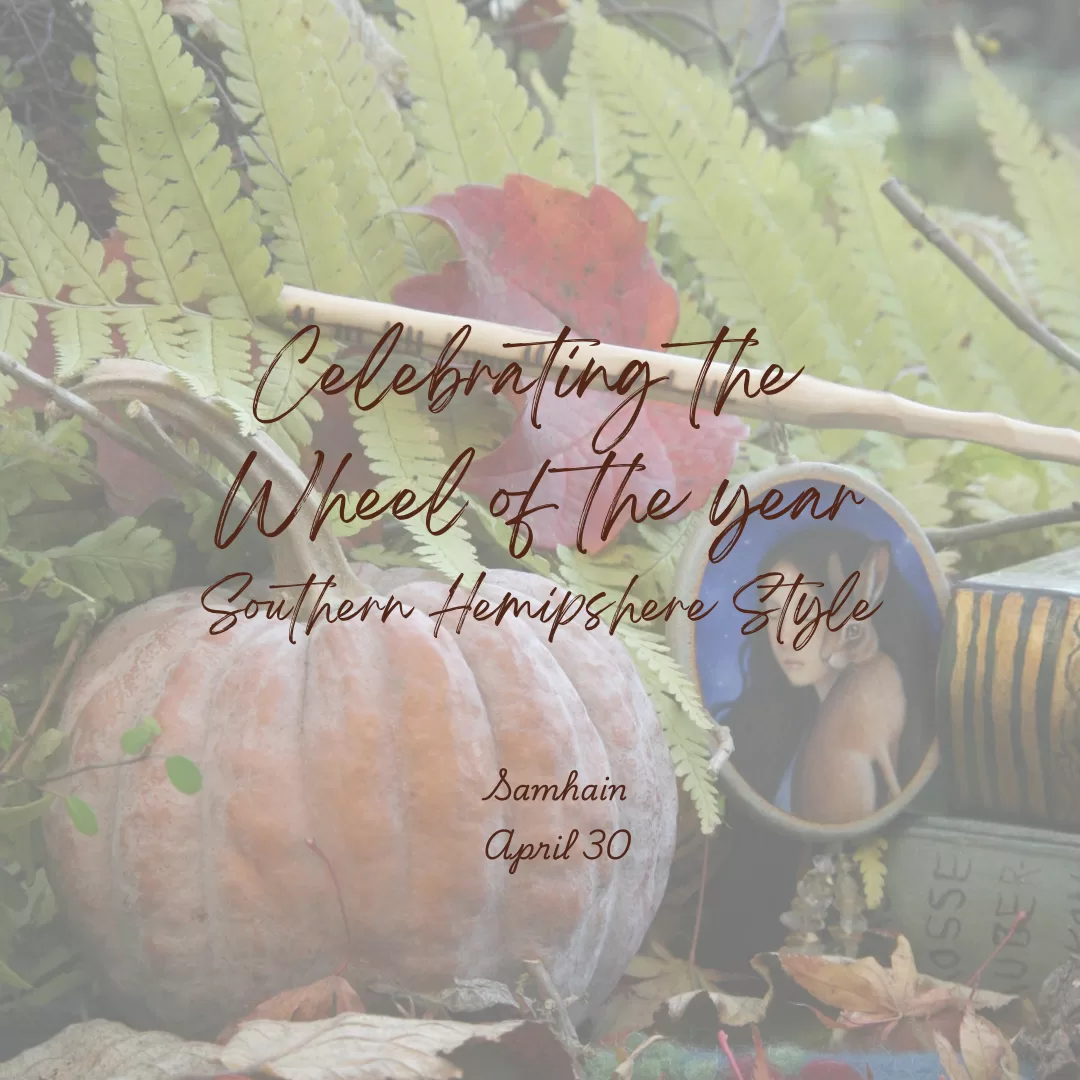
Honouring the Veil: Celebrating Samhain in the Southern Hemisphere
As the days shorten and the air grows crisp in late April and early May, those attuned to the Wheel of the Year in the Southern Hemisphere begin to feel the deep pull of Samhain, the ancient Celtic festival marking the end of the harvest and the beginning of winter. While Northern Hemisphere traditions place Samhain on October 31st, aligning the sabbat with our seasonal cycle means celebrating it around April 30th to May 1st—a time when the land truly begins its descent into darkness.
Samhain (pronounced sow-in) is one of the four Gaelic seasonal festivals. It marks the final harvest, the end of the light half of the year, and the beginning of the dark half. It is also a time when the veil between the worlds is thinnest, offering us a powerful opportunity to honour ancestors, spirits, and the mystery of death and rebirth.
In the Southern Hemisphere, the Wheel of the Year spins differently. Celebrating Samhain in autumn rather than spring aligns us with the true energetic rhythm of the land. Trees shed their leaves, the nights grow longer, animals begin to retreat, and we are called inward—to reflect, release, and remember.
Aligning the sabbat with the actual seasonal cues around us honours the original purpose of Samhain: to acknowledge the changing of the Earth’s cycle, the wisdom of impermanence, and the beauty of death as part of life.
Samhain Correspondence
Other names: The Great Sabbat, All Hallows Eve, All Saints/All Souls Day(Catholic), Day of the Dead (Mexican), Witches New Year, Celtic/ Druid New Year, Shadowfest (Strega), Martinmas or Old Hallowmas (Scotttish/Celtic) Lá Samhna (Modern Irish), Festival of the Dead, Feile Moingfinne (Snow Goddess), Hallowtide (Scottish Gaelis Dictionary), Feast of All Souls, Nos Galen-gae-of Night of the Winter Calends (Welsh), La Houney or Hollantide Day, Sauin or Souney ( Manx), oidhche na h-aimiléise-the night of mischief or confusion(Ireland), Oidhche Shamna (Scotland)
Deities: The Crone, Hecate (Greek), Cerridwen (Welsh-Scottish), Baba Yaga (Russian), Bast (Egyptian), Persephone (Greek), Hel (Norse), Kali (Hindu), all Death & Otherworld Goddesses, Horned Hunter (European), Cernnunos(Greco-Celtic), Osiris (Egyptian), Hades (Greek), Anubis (Egyptian), Coyote Brother (Native American), Loki (Norse), Dis (Roman), Arawn (Welsh), acrificial/Dying/Aging Gods, Death and Otherworld Gods
Colours: Purple, black, orange, silver
Symbols: Pine cones, autumnal flowers, wheat stalks, acornsApples, autumn flowers, acorns, bat, black cat, bones, corn stalks, colored leaves, crows, death/dying, divination and the tools associated with it, ghosts, gourds, Indian corn, jack-o-lantern, nuts , oak leaves, pomegranates, pumpkins, scarecrows, scythes, waning moon
Foods: Apples, pomegranate, pumpkins, nuts, meat (especially pork), potatoes,
Drinks: Cider, mulled wine
Things to do at Samhain
- Create an Ancestral Altar
- Light a bonfire or a candle
- Cook a feast of remembrance, using seasonal produce
- Reflect and release
- Connect to the spirit – it’s a great time for divination work
- Embrace the darkness – take time for silence, solitude and inner reflection. Journal, meditate or walk at dusk
What we’re doing
I made a couple of batches of soup and this delicious potato and bacon soup was our tea with cheesy toast. I light a candle to remember loved ones who have passed. I’ll also do some journaling. If you’d like to grab the journaling prompts I’m using, you can grab them here.
Celebrating Samhain in the Southern Hemisphere invites us to honour both tradition and place. It is a time to pause, remember, and reconnect with the natural cycle of life and death. As the Earth sleeps, so too can we dream more deeply, tend to our inner world, and prepare for the rebirth that will come again.
May this Samhain bring you peace, clarity, and connection—to your ancestors, your spirit, and the sacred rhythms of the land.
Blessed Samhain.
Resources